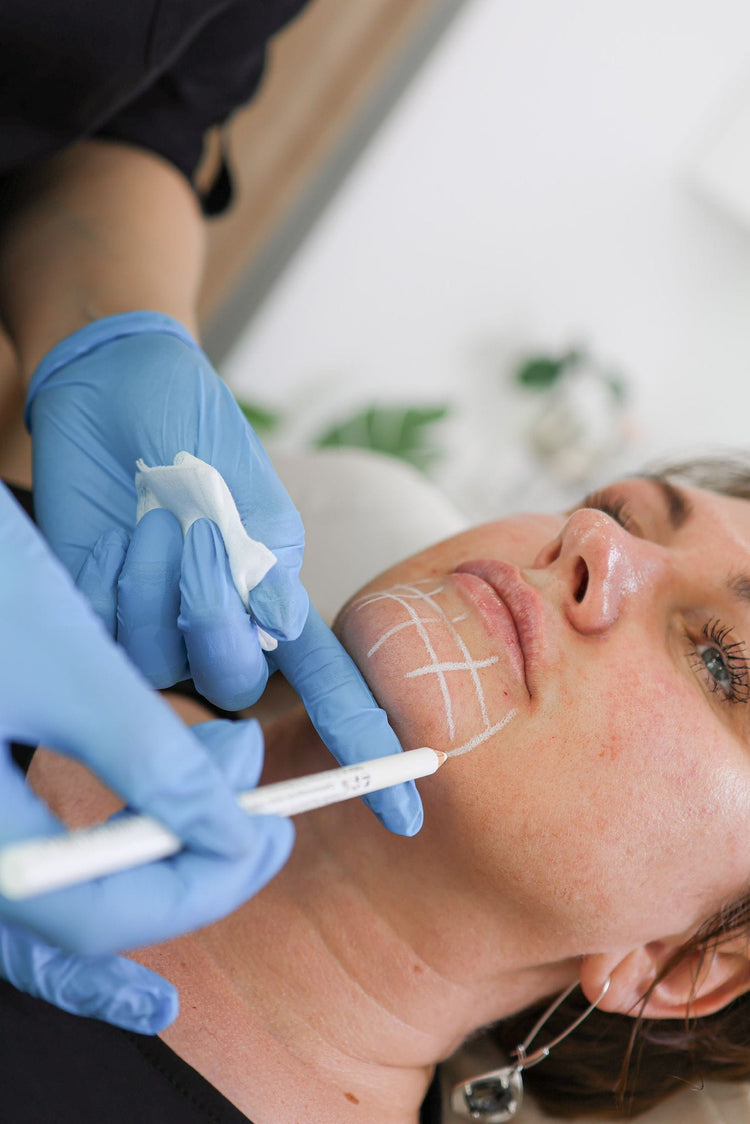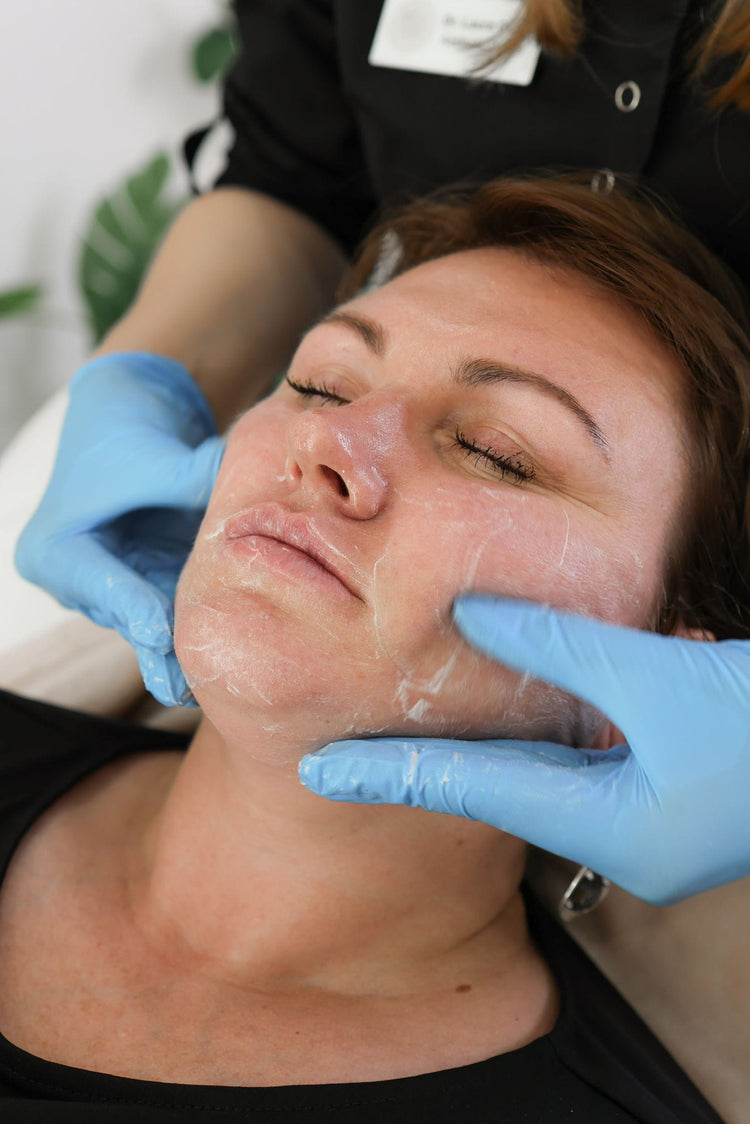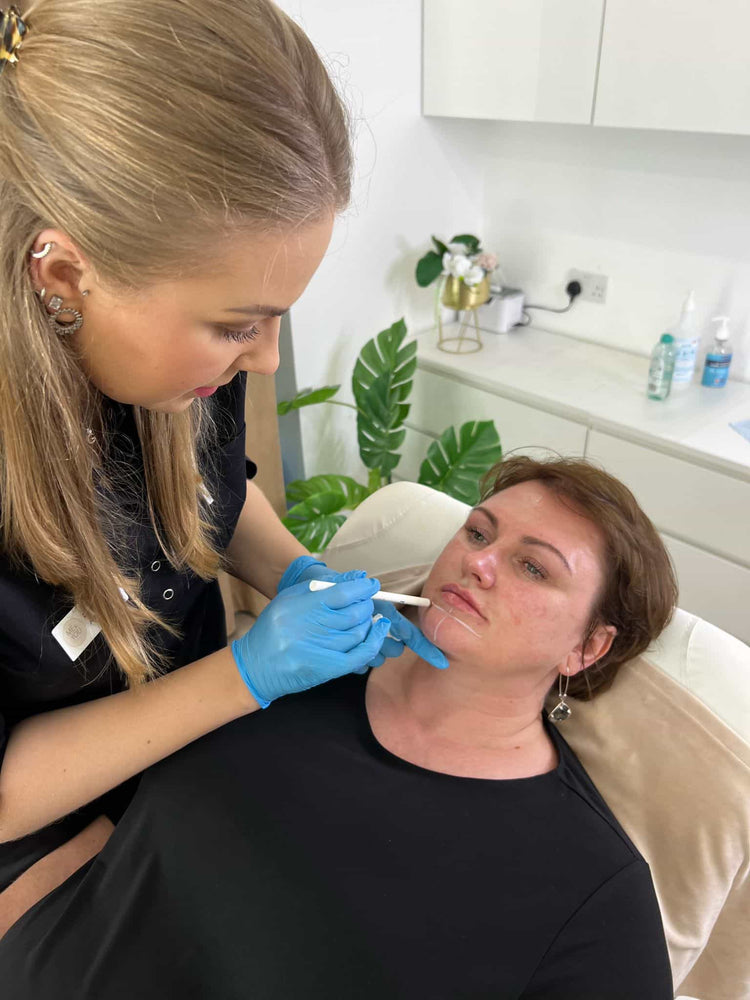Skin Injectables Lifespan
The world of cosmetic treatments offers numerous ways to enhance your appearance, and injectable procedures have become increasingly popular. But how long do these results truly last? Understanding the lifespan of various skin injectables is crucial for making informed decisions about your aesthetic goals and managing expectations.
Dermal Fillers
Skin injectables can provide a noticeable enhancement to your appearance, but their longevity varies depending on the specific type of injectable used. Dermal fillers, for example, typically last anywhere from 6 months to 2 years. These gel-like substances are designed to plump up areas like cheeks, lips, and under-eye hollows, smoothing out wrinkles and restoring volume.
The lifespan of dermal fillers is influenced by several factors, including the type of filler used, the individual’s metabolism, and lifestyle choices. Younger skin tends to metabolize fillers faster than older skin. Certain activities, like excessive sun exposure or strenuous exercise, can also affect the longevity of results.
Hyaluronic Acid Fillers
Hyaluronic acid (HA) is a naturally occurring substance in the body that helps maintain skin hydration and elasticity. HA fillers are a popular type of dermal filler that work by attracting water molecules to plump up the skin.
The duration of results with HA fillers typically ranges from 6 to 18 months. This variation is influenced by factors like the specific HA formulation, the treated area, and individual differences in metabolism.
Fat Grafting
Fat grafting is a cosmetic procedure that involves transferring fat from one area of the body to another, such as the face or breasts. Unlike injectables, fat grafting aims to provide more permanent results by actually adding volume and tissue to the recipient site.
The transferred fat cells are intended to survive and integrate into the new location, but some will inevitably be reabsorbed by the body over time. As a result, multiple sessions may be required to achieve the desired outcome.

While fat grafting can provide more lasting results than injectables, it is not a permanent solution. It’s estimated that about 30-50% of the transferred fat will remain in the grafted area over the long term.
Other Filler Types
Skin injectables can provide a noticeable enhancement to your appearance, but their longevity varies depending on the specific type of injectable used. Dermal fillers, for example, typically last anywhere from 6 months to 2 years. These gel-like substances are designed to plump up areas like cheeks, lips, and under-eye hollows, smoothing out wrinkles and restoring volume.
The lifespan of dermal fillers is influenced by several factors, including the type of filler used, the individual’s metabolism, and lifestyle choices. Younger skin tends to metabolize fillers faster than older skin. Certain activities, like excessive sun exposure or strenuous exercise, can also affect the longevity of results.
Hyaluronic acid (HA) is a naturally occurring substance in the body that helps maintain skin hydration and elasticity. HA fillers are a popular type of dermal filler that work by attracting water molecules to plump up the skin. The duration of results with HA fillers typically ranges from 6 to 18 months. This variation is influenced by factors like the specific HA formulation, the treated area, and individual differences in metabolism.
Other types of dermal fillers include those made from poly-L-lactic acid (PLLA) and calcium hydroxylapatite (CaHA). PLLA fillers stimulate collagen production, leading to gradual volume enhancement over time. CaHA fillers provide immediate results and can last for up to a year or more.
Fat grafting is a cosmetic procedure that involves transferring fat from one area of the body to another, such as the face or breasts. Unlike injectables, fat grafting aims to provide more permanent results by actually adding volume and tissue to the recipient site.
The transferred fat cells are intended to survive and integrate into the new location, but some will inevitably be reabsorbed by the body over time. As a result, multiple sessions may be required to achieve the desired outcome. While fat grafting can provide more lasting results than injectables, it is not a permanent solution. It’s estimated that about 30-50% of the transferred fat will remain in the grafted area over the long term.
Botulinum Toxin (Botox) and Other Neurotoxins
Skin injectables can provide a noticeable enhancement to your appearance, but their longevity varies depending on the specific type of injectable used.
Dermal fillers, for example, typically last anywhere from 6 months to 2 years. These gel-like substances are designed to plump up areas like cheeks, lips, and under-eye hollows, smoothing out wrinkles and restoring volume.
The lifespan of dermal fillers is influenced by several factors, including the type of filler used, the individual’s metabolism, and lifestyle choices. Younger skin tends to metabolize fillers faster than older skin. Certain activities, like excessive sun exposure or strenuous exercise, can also affect the longevity of results.
- Hyaluronic acid (HA) is a naturally occurring substance in the body that helps maintain skin hydration and elasticity. HA fillers are a popular type of dermal filler that work by attracting water molecules to plump up the skin. The duration of results with HA fillers typically ranges from 6 to 18 months. This variation is influenced by factors like the specific HA formulation, the treated area, and individual differences in metabolism.
- Other types of dermal fillers include those made from poly-L-lactic acid (PLLA) and calcium hydroxylapatite (CaHA). PLLA fillers stimulate collagen production, leading to gradual volume enhancement over time. CaHA fillers provide immediate results and can last for up to a year or more.
Fat grafting is a cosmetic procedure that involves transferring fat from one area of the body to another, such as the face or breasts. Unlike injectables, fat grafting aims to provide more permanent results by actually adding volume and tissue to the recipient site.
The transferred fat cells are intended to survive and integrate into the new location, but some will inevitably be reabsorbed by the body over time. As a result, multiple sessions may be required to achieve the desired outcome. While fat grafting can provide more lasting results than injectables, it is not a permanent solution. It’s estimated that about 30-50% of the transferred fat will remain in the grafted area over the long term.
Onset and Duration of Effects
Skin injectables can provide a noticeable enhancement to your appearance, but their longevity varies depending on the specific type of injectable used. Dermal fillers, for example, typically last anywhere from 6 months to 2 years. These gel-like substances are designed to plump up areas like cheeks, lips, and under-eye hollows, smoothing out wrinkles and restoring volume.
The lifespan of dermal fillers is influenced by several factors, including the type of filler used, the individual’s metabolism, and lifestyle choices. Younger skin tends to metabolize fillers faster than older skin. Certain activities, like excessive sun exposure or strenuous exercise, can also affect the longevity of results.
- Hyaluronic acid (HA) is a naturally occurring substance in the body that helps maintain skin hydration and elasticity. HA fillers are a popular type of dermal filler that work by attracting water molecules to plump up the skin. The duration of results with HA fillers typically ranges from 6 to 18 months. This variation is influenced by factors like the specific HA formulation, the treated area, and individual differences in metabolism.
- Other types of dermal fillers include those made from poly-L-lactic acid (PLLA) and calcium hydroxylapatite (CaHA). PLLA fillers stimulate collagen production, leading to gradual volume enhancement over time. CaHA fillers provide immediate results and can last for up to a year or more.
Fat grafting is a cosmetic procedure that involves transferring fat from one area of the body to another, such as the face or breasts. Unlike injectables, fat grafting aims to provide more permanent results by actually adding volume and tissue to the recipient site.
The transferred fat cells are intended to survive and integrate into the new location, but some will inevitably be reabsorbed by the body over time. As a result, multiple sessions may be required to achieve the desired outcome. While fat grafting can provide more lasting results than injectables, it is not a permanent solution. It’s estimated that about 30-50% of the transferred fat will remain in the grafted area over the long term.
Frequency of Treatments
Skin injectables can provide a noticeable enhancement to your appearance, but their longevity varies depending on the specific type of injectable used.
Dermal fillers, for example, typically last anywhere from 6 months to 2 years. These gel-like substances are designed to plump up areas like cheeks, lips, and under-eye hollows, smoothing out wrinkles and restoring volume.
The lifespan of dermal fillers is influenced by several factors, including the type of filler used, the individual’s metabolism, and lifestyle choices. Younger skin tends to metabolize fillers faster than older skin. Certain activities, like excessive sun exposure or strenuous exercise, can also affect the longevity of results.
- Hyaluronic acid (HA) is a naturally occurring substance in the body that helps maintain skin hydration and elasticity. HA fillers are a popular type of dermal filler that work by attracting water molecules to plump up the skin. The duration of results with HA fillers typically ranges from 6 to 18 months. This variation is influenced by factors like the specific HA formulation, the treated area, and individual differences in metabolism.
- Other types of dermal fillers include those made from poly-L-lactic acid (PLLA) and calcium hydroxylapatite (CaHA). PLLA fillers stimulate collagen production, leading to gradual volume enhancement over time. CaHA fillers provide immediate results and can last for up to a year or more.
Fat grafting is a cosmetic procedure that involves transferring fat from one area of the body to another, such as the face or breasts. Unlike injectables, fat grafting aims to provide more permanent results by actually adding volume and tissue to the recipient site.
The transferred fat cells are intended to survive and integrate into the new location, but some will inevitably be reabsorbed by the body over time. As a result, multiple sessions may be required to achieve the desired outcome. While fat grafting can provide more lasting results than injectables, it is not a permanent solution. It’s estimated that about 30-50% of the transferred fat will remain in the grafted area over the long term.

The frequency of treatments for skin injectables depends on the type of injectable and the desired outcome.
Dermal fillers generally require repeat treatments to maintain results. This can range from every 6 months to once a year, depending on the specific filler used and individual factors.
HA fillers tend to last longer than other types of dermal fillers, so they may only need to be replenished every 6 to 12 months.
PLLA fillers stimulate collagen production over time, so touch-up appointments might be less frequent.
Fat grafting typically requires multiple sessions spaced several weeks apart to achieve the desired volume. Once the results are established, maintenance treatments may be needed less frequently, perhaps every few years.
Factors Affecting Longevity

Understanding how long skin injectables last is essential for making informed decisions about cosmetic enhancements. The duration of results varies significantly depending on the type of injectable used. Factors like individual metabolism, lifestyle choices, and the specific formulation of the filler also play a role.
Skin Age and Type
Skin injectables can provide a noticeable enhancement to your appearance, but their longevity varies depending on the specific type of injectable used.
Dermal fillers, for example, typically last anywhere from 6 months to 2 years. These gel-like substances are designed to plump up areas like cheeks, lips, and under-eye hollows, smoothing out wrinkles and restoring volume.
The lifespan of dermal fillers is influenced by several factors, including the type of filler used, the individual’s metabolism, and lifestyle choices. Younger skin tends to metabolize fillers faster than older skin. Certain activities, like excessive sun exposure or strenuous exercise, can also affect the longevity of results.
- Hyaluronic acid (HA) is a naturally occurring substance in the body that helps maintain skin hydration and elasticity. HA fillers are a popular type of dermal filler that work by attracting water molecules to plump up the skin. The duration of results with HA fillers typically ranges from 6 to 18 months. This variation is influenced by factors like the specific HA formulation, the treated area, and individual differences in metabolism.
- Other types of dermal fillers include those made from poly-L-lactic acid (PLLA) and calcium hydroxylapatite (CaHA). PLLA fillers stimulate collagen production, leading to gradual volume enhancement over time. CaHA fillers provide immediate results and can last for up to a year or more.
Fat grafting is a cosmetic procedure that involves transferring fat from one area of the body to another, such as the face or breasts. Unlike injectables, fat grafting aims to provide more permanent results by actually adding volume and tissue to the recipient site.
The transferred fat cells are intended to survive and integrate into the new location, but some will inevitably be reabsorbed by the body over time. As a result, multiple sessions may be required to achieve the desired outcome. While fat grafting can provide more lasting results than injectables, it is not a permanent solution. It’s estimated that about 30-50% of the transferred fat will remain in the grafted area over the long term.
The frequency of treatments for skin injectables depends on the type of injectable and the desired outcome.
Dermal fillers generally require repeat treatments to maintain results. This can range from every 6 months to once a year, depending on the specific filler used and individual factors.
HA fillers tend to last longer than other types of dermal fillers, so they may only need to be replenished every 6 to 12 months.
PLLA fillers stimulate collagen production over time, so touch-up appointments might be less frequent.
Fat grafting typically requires multiple sessions spaced several weeks apart to achieve the desired volume. Once the results are established, maintenance treatments may be needed less frequently, perhaps every few years.
Understanding how long skin injectables last is essential for making informed decisions about cosmetic enhancements. The duration of results varies significantly depending on the type of injectable used. Factors like individual metabolism, lifestyle choices, and the specific formulation of the filler also play a role.
Injection Location
Injection location plays a role in how long skin injectables last. Different areas of the face metabolize substances at different rates. For example, fillers injected into the lips tend to be broken down more quickly than those injected into the cheeks. This is because the lips have a higher blood flow and are constantly moving, which can accelerate the breakdown process.
Injection technique also matters. A skilled injector will place the filler strategically to maximize its longevity. They will consider factors like the amount of product needed, the depth of injection, and the individual’s facial anatomy.
Proper aftercare is also crucial for prolonging the results of skin injectables. Protecting your skin from sun damage, avoiding excessive rubbing or squeezing, and following your injector’s instructions for post-treatment care can help to maintain the longevity of your results.
Lifestyle Factors
Lifestyle factors significantly influence how long skin injectables last.
Here’s a breakdown:
* **Smoking:** Smoking accelerates skin aging and collagen breakdown, which can shorten the lifespan of dermal fillers.
* **Sun Exposure:** UV radiation damages collagen and elastin fibers, leading to faster filler degradation.
* **Diet and Hydration:** A healthy diet rich in antioxidants and plenty of hydration support skin health and potentially prolong the effects of injectables.
* **Exercise:** Regular exercise improves blood circulation, which can help distribute fillers more evenly and potentially extend their duration. However, strenuous activities that put pressure on the treated areas may cause fillers to break down faster.
* **Stress:** Chronic stress can negatively impact skin health, leading to premature aging and potentially affecting filler longevity.
These lifestyle choices can either enhance or detract from the longevity of your results. Making healthy choices can help maximize the lifespan of your skin injectables.
Book your skin injectable consultation with Dr. Laura Geige at It’s Me & You Clinic
- How Long Does Lip Swelling Last After Filler - August 19, 2025
- How Long Do Skin Injectables Last And What To Expect - August 15, 2025
- How Jaw Fillers Compare To Traditional Jawline Implants In London - August 10, 2025
